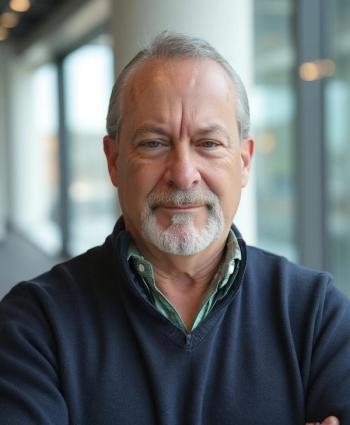
- Medical Economics December 2021
- Volume 98
- Issue 12
Is remote patient monitoring right for your practice?
Introduction:
Interest in remote patient monitoring (RPM) — using digital technologies to track and capture patients’ medical/health data and electronically transmitting it to their health care providers — has been growing for years. But it accelerated in 2020 with the steep decline in in-person patient visits brought on by COVID-19, which forced health care providers to find alternative ways of monitoring patients’ health.
The growth is reflected in a July forecast from ResearchAndMarkets.com that predicted the market for RPM devices will reach $85 billion by the end of 2026, up from just over $20 billion in 2019, or an annual compound rate of nearly 23%.
Similarly, a March VivaLNK survey of hospitals and clinics found that 43% believe RPM adoption will be on par with in-patient monitoring in five years, and 35% believe it will surpass in-patient monitoring.
Along with its benefits for patients’ health, RPM offers the opportunity to become a significant revenue stream for practices. But turning that possibility into reality requires careful organizational planning, gaining acceptance from providers and staff and educating patients on what RPM requires of them and how they will benefit from it.
Learning objectives
RPM explained: the benefits and the challenges.
How to reach patients and achieve buy-in and participation.
Revenue implications and strategies to create a
sustainable program.
Meet the panelists
Todd Haedrich, CEO, Optimize Health
Neha Ajmera, MBA, senior vice president of operations,
Optimize Health
Ryan Clark, vice president of customer success,
Optimize Health
Kaitlyn O’Connor, J.D., senior counsel, Nixon Gwilt Law
Get buy-in from staff and patients
RPM can be an effective tool for improving patient outcomes and driving practice revenue. But implementing a successful RPM program requires careful internal preparation and taking the time to instruct patients on how to use monitoring devices and report their data.
“If you think RPM is right for you, you need to make certain that your providers and staff are educated on what it is (and) how to identify patients that will benefit clinically from an RPM program and that they can educate patients and incorporate RPM into the patients’ care programs,” says Ryan Clark, vice president of customer success at Optimize Health.
Building an effective RPM program starts with getting organizational buy-in, says Clark. “Talk about it with all the impacted areas in your practice. Make sure you have the bandwidth and your clinical staff are all bought in. Start that conversation broadly and early.”
Clark advises identifying clinical and operational “champions,” with the latter being the main point of contact for anyone involved in the program either internally or externally.
At the same time, Clark says, patients need to become partners in managing their health and be educated on how RPM can help them and what’s expected of them. “Is it taking daily readings if they’re trying to manage blood sugar? Do they take them before or after meals? There’s all kinds of patient education that goes into this, and you need to empower your team to speak to that and make patients feel like they have ownership in getting their condition under control,” he says.
Once an RPM program is up and running, it’s important to invest in its maintenance and monitor its results. “You obviously want to track the patient outcomes from the program,” Clark says. In addition, “as more patients come on to the program and you identify additional clinical needs, (you want to ensure) you have the right devices to meet those needs and to measure your reimbursement success and the success of the patient care plans.”
Neha Ajmera, MBA, senior vice president of operations for Optimize Health, says practices most commonly use RPM to manage patients with chronic diseases and/or acute conditions and following discharge from a hospital or nursing facility. Since the start of the COVID-19 pandemic, RPM has also been used to monitor patients with COVID-19 or its symptoms or who have been exposed to the virus.
From the patient perspective, Ajmera says, RPM works best for those who:
Have an acute condition that can improve with frequent measurements and clinical interventions as needed.
Have a chronic condition that can be improved with additional data and coaching.
Are motivated to take responsibility for their health and understand the benefits and expectations of an RPM program
“Ultimately RPM is a partnership between the patient and provider that’s made deeper because of real-time data,” she says.
Kaitlyn O’Connor, J.D., a health care attorney with the Nixon Gwilt Law, says that RPM-related services are covered by five current procedural terminology, or CPT, codes with varying levels of reimbursement. These range from $19 for “initial setup and patient education on use of equipment” (code 99453) to $63 for “device(s) supply with daily recording(s) or programmed alert transmission, each 30 days” (99454).
She adds that Medicare and commercial payers recognize RPM’s value in maintaining patients’ health and improving outcomes and are willing to reimburse for it at relatively high levels. Moreover, by providing physicians with regular data about patients’ health, RPM can reduce costly hospitalizations and emergency department visits.
She cites studies showing that hospital readmission rates for patients with heart failure using RPM were less than a third of those without RPM. Among patients with chronic obstructive pulmonary disease, the rates were less than half.Consequently, O’Connor says, the Centers for Medicare & Medicaid Services has made RPM a “strategic priority” in its effort to reduce Medicare costs, which are on course to double over the next decade.
Solutions and takeaways
Get buy-in for an RPM program from every part of your organization.
Identify an RPM program champion and build a team around that individual.
Educate patients on what RPM requires of them and how they can benefit from it.
Dedicate a team member or members time to RPM monitoring and patient engagement.
Invest in the program’s management and growth.
Articles in this issue
almost 4 years ago
Retirement planning for physiciansalmost 4 years ago
Collecting more money from patients and payersalmost 4 years ago
Stop leaking moneyalmost 4 years ago
Save money on taxesalmost 4 years ago
What you need to know about mentoring other doctorsalmost 4 years ago
COVID-19 and malpractice lawsuits: What the future may holdalmost 4 years ago
Small company stocks appear poised for growthalmost 4 years ago
Coding and documentation best practicesabout 4 years ago
Expenses continue to rise for physicians and hospitalsNewsletter
Stay informed and empowered with Medical Economics enewsletter, delivering expert insights, financial strategies, practice management tips and technology trends — tailored for today’s physicians.



















